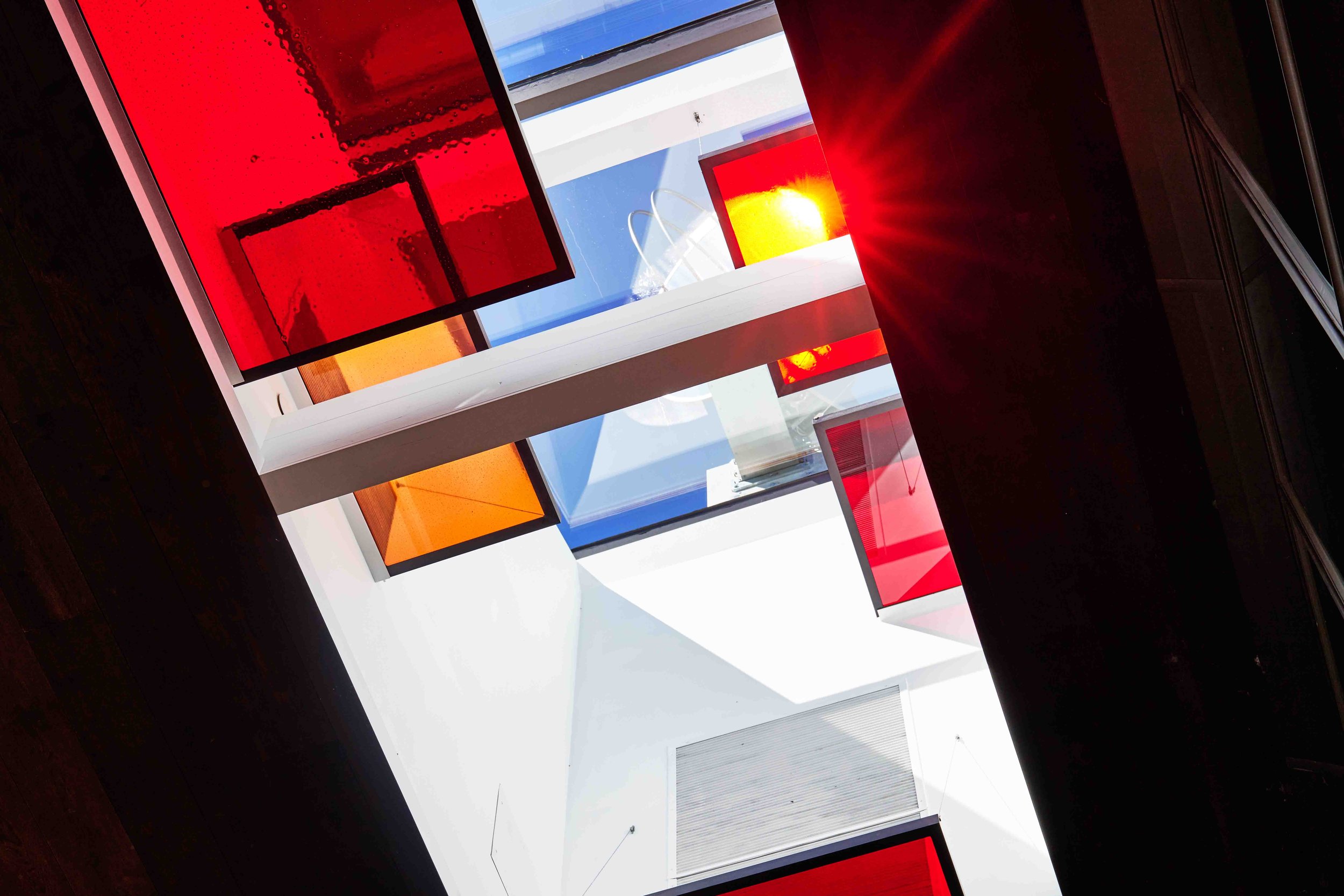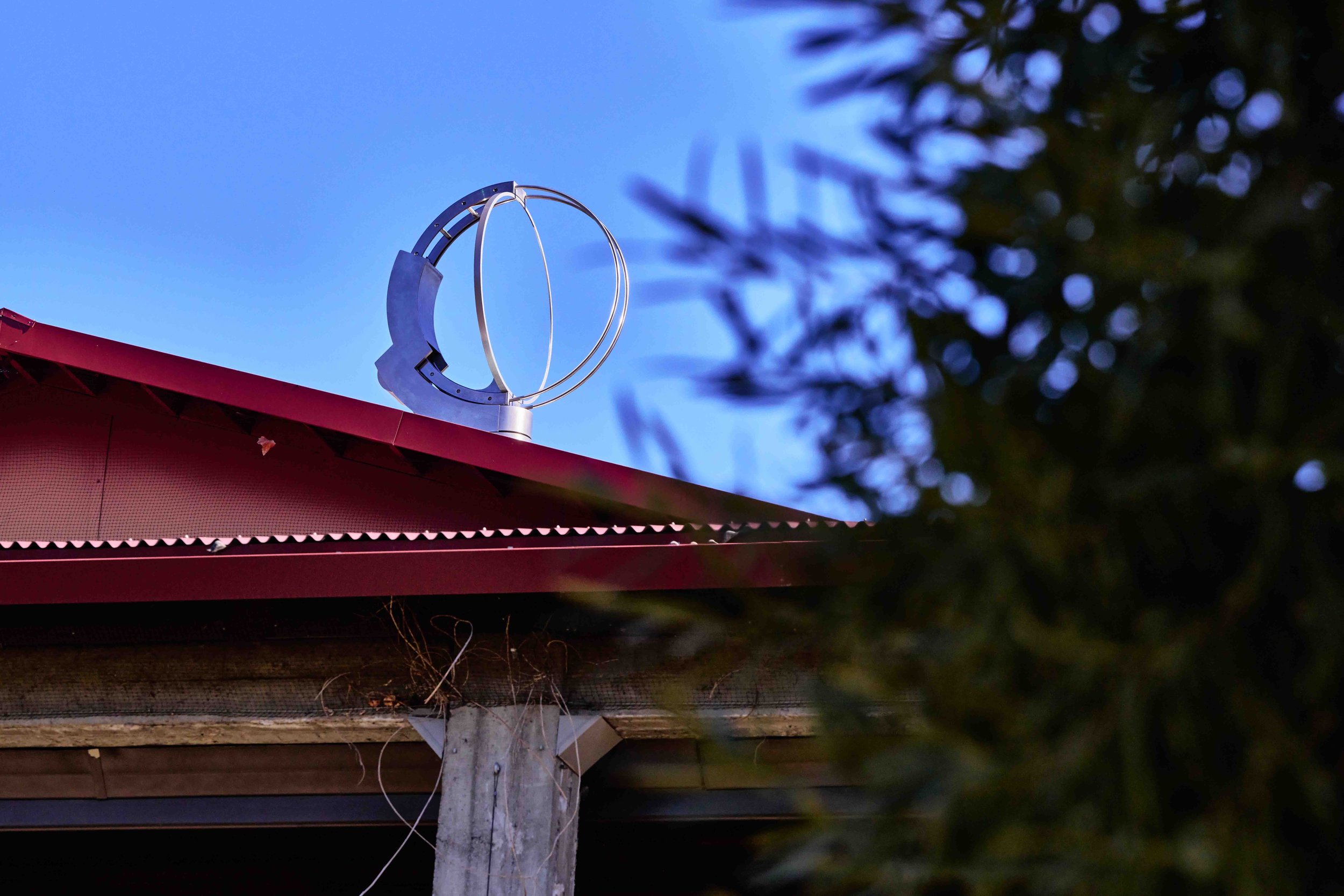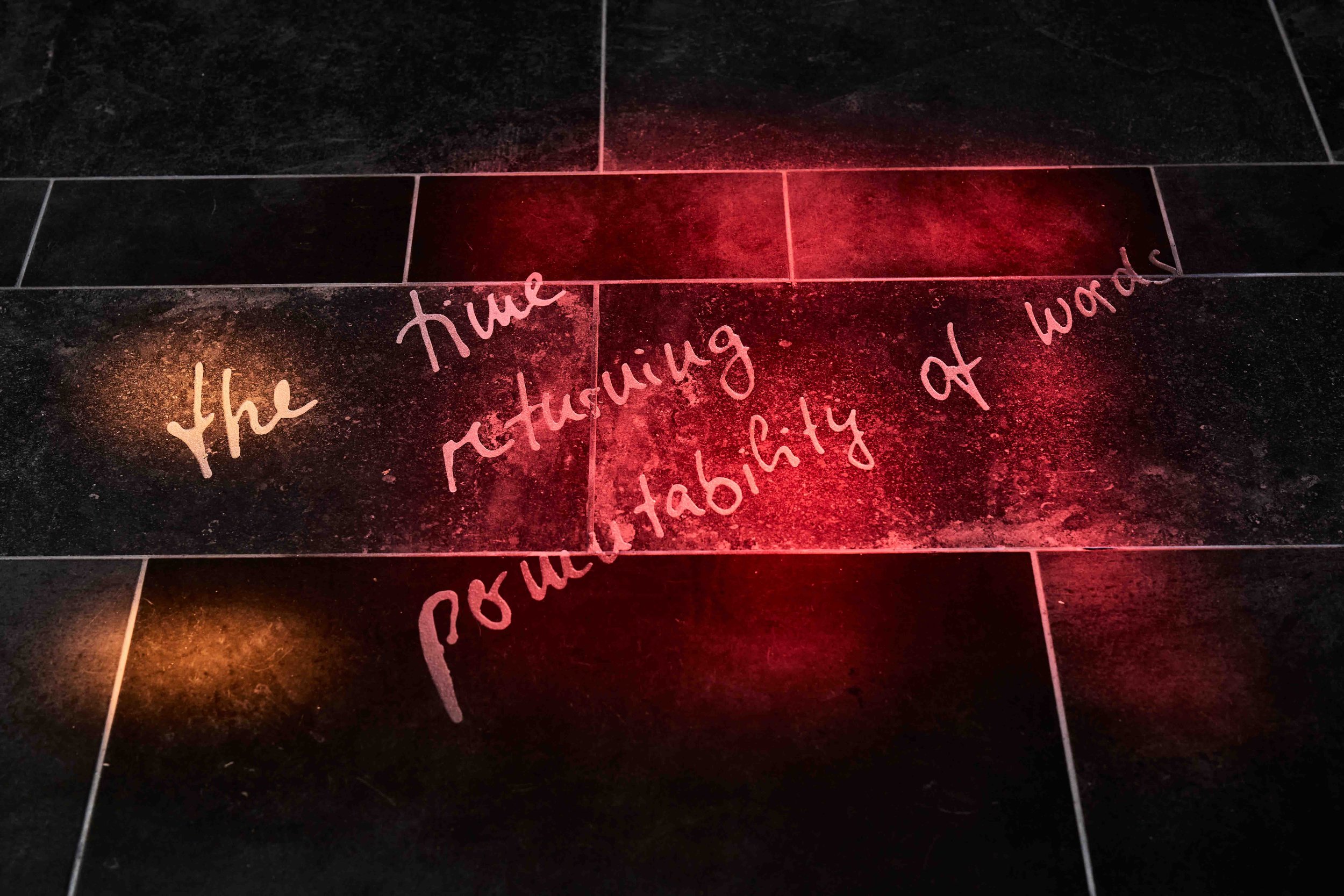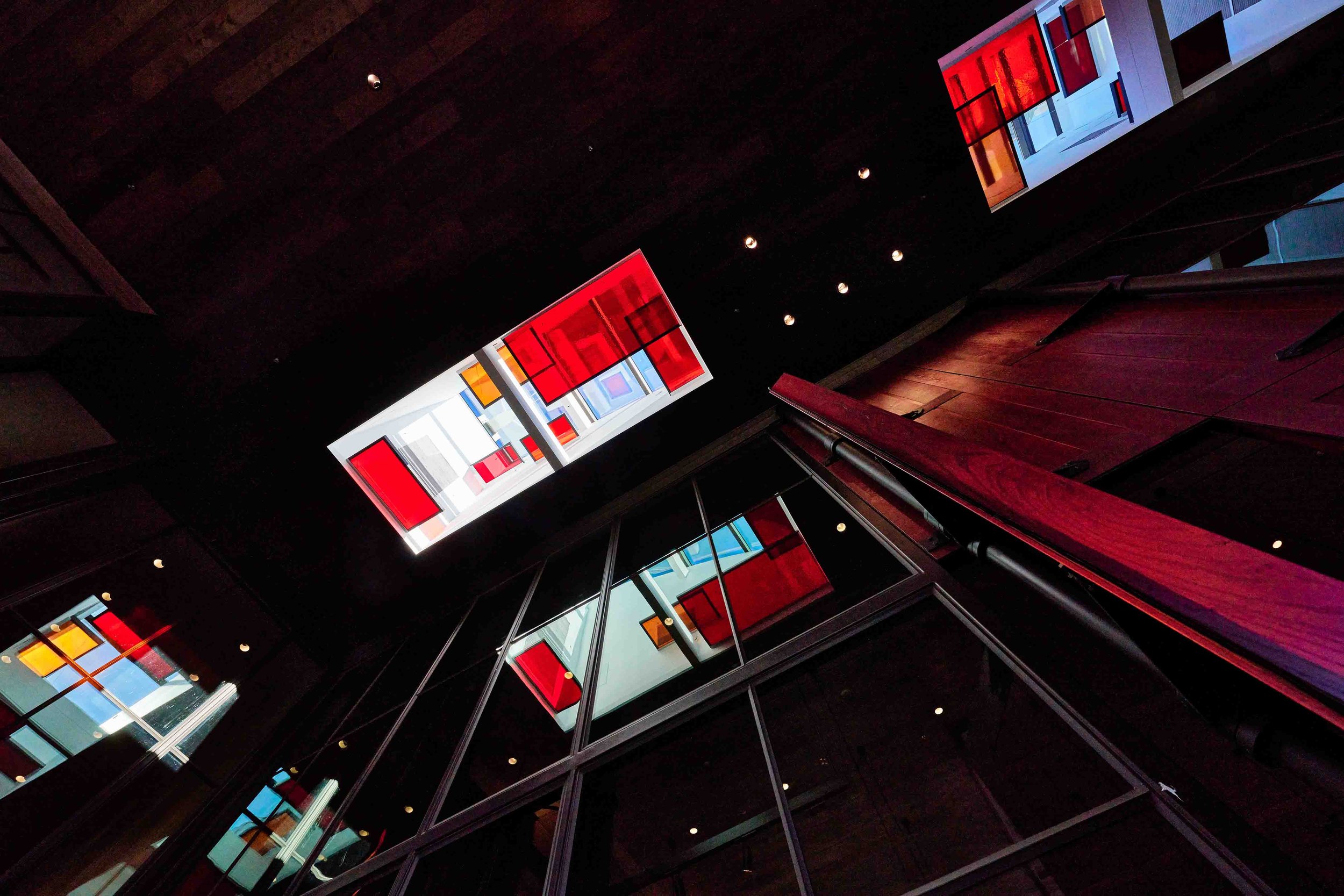Open Field Poem is a permanent, site-specific commision for the Louis M. Martini winery in St. Helena, Ca. The installation, which was unveiled in October, 2023, comprises three primary elements—a kinetic heliostat and static mirror positioned on the roof at the tasting room’s entrance, twelve colored glass panels suspended within the skylights and ten handwritten text fragments sandblasted into the tiles approximately 25 feet below.
The heliostat and mirror work in tandem to concentrate sunlight through the colored glass panels at 24 rhythmic intervals, mirroring a diurnal cadence, and bathing predetermined targets on the ground in a saturated glow. The texts, which are illuminated at the top of the hour, reference Barba’s dialogues with winemakers at Martini and compositions by Sun Ra. Guided by a logic of visual form over linguistic function, Barba manifests these fragments to be perceived, traversed, and read, translating language into a visual medium.
While the heliostat’s sequence, pathway, targets and pace of movement were carefully choreographed by the artist, prevailing atmospheric and seasonal conditions mediate the observable qualities and behavior of the installation’s “performance.” As the heliostat shifts positions, light traverses across and between the panels, unveiling their full spectrum of color, which span a range of five red, mauve, and amber tones. In the space between, a sixth color emerges—the natural light of the sun. These colors evoke the evolving hues of aging wine and hold significance in both cinema and astronomy, including the spectrum observed in ultraviolet and coronagraphic imaging of the sun and red and yellow filters employed in cinematography.
Glass is one of the materials used most frequently throughout Barba’s entire practice—fulfilling practical functions, such as in the lenses through which she captures her films and the screens on which she projects them. It enables the observation of the astronomical phenomena foundational to her conceptual practice, and serves as a purely sculptural material in its own right. In Open Field Poem, it finds new resonance in the context of winemaking. Both share alchemical qualities related to transformation, demanding an intimate understanding of chemistry, matter in various states and adherence to a time-bound, disciplined sequence of actions to achieve form, taste, or color. Glass is colored through the introduction of mineral elements and compounds. The chemical interaction influences which wavelengths of color glass absorbs or reflects, enabling the manipulation of hues within a single color family. This, too, shares resonance with spectral imaging, as they both rely on the selective absorption or filtering of wavelengths.
Classical mineral-derived colors include cadmium red and sulfur yellow, but the exact hue imparted by these minerals bespeaks the geographic locale from which they were sourced. Trace elements exclusive to the earth from where a given was quarried lead to slight variations, and to this extent it can be said there is a terroir of glass.
Open Field Poem is more than an installation. It is a living ecosystem, an orchestral ensemble conducted by the sun, where existing interior space, windows, heliostat, mirror, glass plates, text, and incoming light produce a symphony of sensory engagement. –Georgia Horn
Open Field Poem, 2023
Glass, kinetic heliostat and static mirror
Dimensions variable
Photo: Louis M. Martini winery © Rosa Barba
Open Field Poem, 2023 has been on display at the following locations:
Louis M. Martini winery in St. Helena, California, USA



